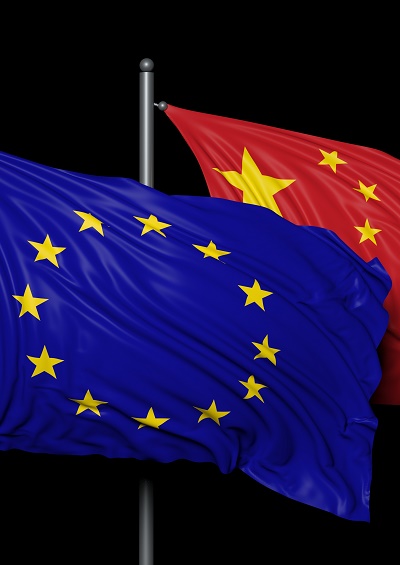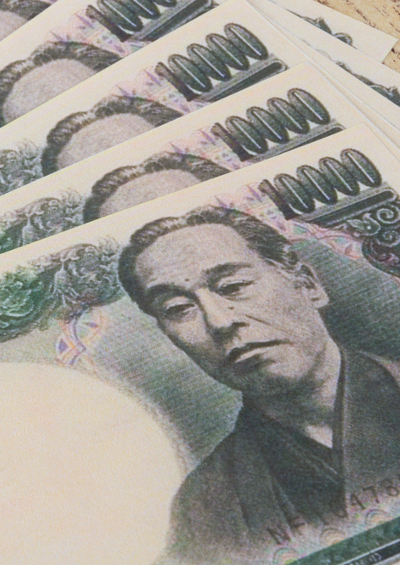Why is China So Interested in Central and Eastern Europe?
The Middle Kingdom sets its eyes on Europe’s eastern half, to get a beachhead into Western Europe.
June 11, 2014

China is a magnet for European companies. With a trade volume of almost $600 billion, and a trade deficit with China at about $150 billion, the European Union is China’s largest trading partner.
The EU and China are seeking to bring trade to $1 trillion by the end of this decade, in line with the EU-China 2020 Strategic Agenda for Cooperation. However, the benefits of this trade relationship are unevenly distributed in Europe, with more advantages for countries in the continent’s North.
China is seen as using Europe as a hedge against the United States. That is one reason why China already stepped up purchases of eurozone sovereign bonds. China has also invested across strategic industries in Europe and infused a lot of capital into property markets.
What about China and the countries of Central and Eastern Europe? While China’s interests in the region are manifold, Chinese companies so far have only invested in the low billions there.
To bolster financial cooperation, a credit line stretching up to €10 billion was one of the proposals put forward at last year’s China-CEE leaders’ summit. It also allowed for the establishment of branches of Chinese financial institutions in Eastern Europe.
China searches for new markets
China looks at the CEE countries primarily as a market for its own strategic industries, exports, and as a large window into Western European markets.
As Beijing continued to look for new markets, it made a pledge to double trade, although increasing imports of Central and Eastern European products to China seems relatively challenging.
Central and Eastern Europe-made products cannot compete on price with the lower-cost products made in China, nor do the region’s companies innovate enough to compete on quality in the Chinese market.
China also offered to satisfy the urgent needs for infrastructure in CEE (such as in high-speed and freight railways, nuclear and other forms of power, roads, ports and telecommunications).
Through investments in central Europe’s infrastructure, Beijing wants to accelerate the creation of a network of ports, logistics centers and railways to distribute Chinese products and bolster East-West trade.
Finding more energy abroad
Another important pillar of China’s expansion policy concerns securing its present and future demand for commodities, mainly by investing in countries rich in natural resources.
Especially attractive is the Balkan energy sector. Major western utility companies are unwilling to make risky investments, which gives China some options. Countries such as Albania, Montenegro and Bosnia-Herzegovina are attractive for their hydropower capacities. Macedonia, Serbia and Croatia attract investment for their wind energy potentials.
More generally, China is keen to proceed with projects in nuclear, wind power, telecommunications and high-speed railway sectors. It has agreed to build a high-speed rail line linking Hungary to Serbia and pledged to help Romania connect with Hungary.
Where to from here?
For Beijing, trade relations with Southeast Europe mainly focus on exchanges with the largest and newest EU countries. The still transitional economies of the Southeast Europe allow China to circumvent some of the EU’s anti-dumping regulations and export products directly to a market of 800 million people thanks to FTAs with EU.
In November 2013, during his meetings in Bucharest with 16 prime ministers from the Central and Eastern European countries, Chinese Premier Li Keqiang called for wide-ranging, multi-tier cooperation aimed at doubling trade and investment in five years.
However, China is not exactly an easy partner for the EU. Controversial issues include intellectual property rights, price distortions due to subsidize dumping, unequal conditions for market access, as well as discrimination against EU companies in Chinese government tenders.
And within Europe, although China and the EU signed a strategic partnership in 2004, there is a lack of common understanding in Europe about strategic policies towards China.
Fusing Chinese industry and European technology
One of the most significant strategic objectives of China’s investment in Europe is to engage more closely with the continent’s research and development networks.
To some extent, China continues to depend on technology from Europe and the United States. China is not yet an innovation powerhouse, although its spending on R&D is rising very rapidly.
China still spends less than half as much as the EU as a whole and only one-third of what the United States spends on R&D. Chinese companies are good at incremental innovation, but they lag behind advanced countries when it comes to disruptive innovation.
Less than 6% of Chinese patents are protected by global patents, compared to 49% of U.S. patents. Fifty percent of total exports and more than 90% of China’s high-tech exports are produced by foreign companies operating there.
For Europe, China represents a huge economic opportunity. Chinese labor and capital working alongside European rules and technology — carefully managed — could create significant opportunities for both economies going forward.
Editor’s note: This article reflects the views of the author and is not necessarily the official policy of the U.S. or German governments.
Takeaways
The Middle Kingdom sets its eyes on Europe’s central and eastern countries as Beijing seeks to grow trade further.
China looks at Eastern Europe as a market for its own strategic industries and as a window into Western Europe.
Fusing Chinese industry with European rules and tech could create significant opportunities for both economies.
China and the EU have quarreled over trade, but desire for new markets may bring them together.
Read previous

Japan: A Venetian Destiny?
June 11, 2014